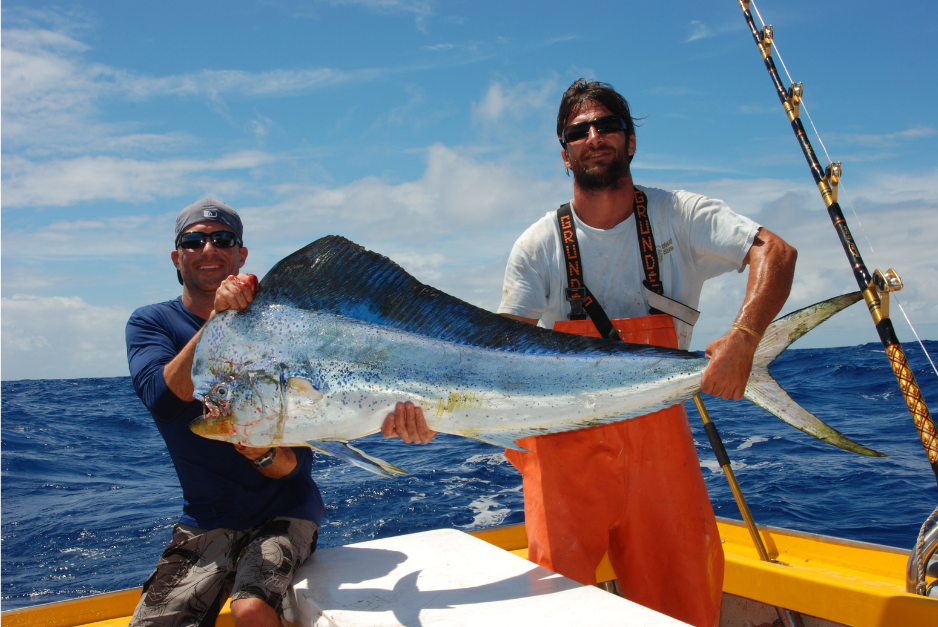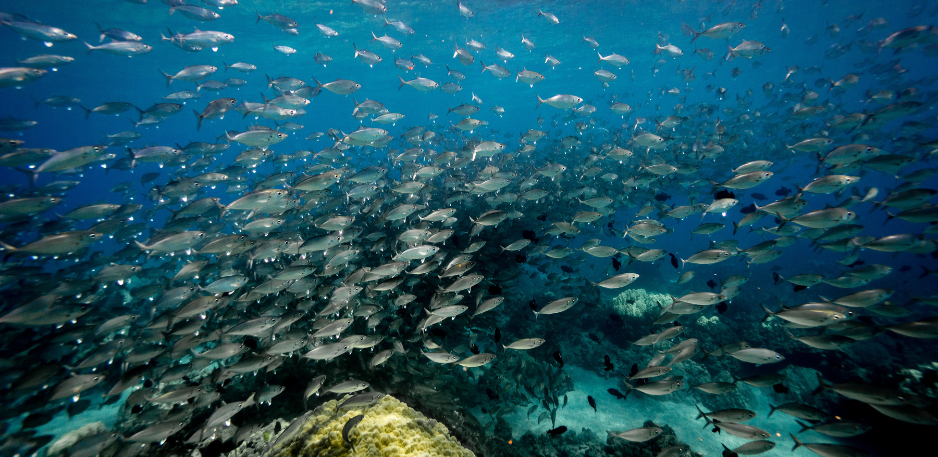
NOAA Fisheries recently published a 2022 Ecosystem Status Report for Hawaiʻi. It expands the geographic scope of previous efforts and describes the status and trends of marine ecosystems across the main Hawaiian Islands. Socio-cultural connections, climate and ocean ecosystem processes, and human impacts are highly variable across multiple spatial scales in Hawai‘i.
The 2022 Ecosystem Status Report provides the first-ever assessment of spatial variation in cumulative impacts to nearshore ecosystems for the main Hawaiian Islands. Often, the impact of multiple environmental stressors on an ecosystem at one time is not equal to the sum of the impacts that each stressor has on the ecosystem when simply acting alone. Understanding cumulative impacts, the effects of multiple stressors at one time, across various areas is essential to targeting management, conservation, and restoration activities. Researching and understanding cumulative impacts on ecosystems is also an important component in NOAA Fisheries initiative to facilitate the future of ecosystem-based fishery management across regions nationwide.
Human Communities
“Meeting fisheries conservation and management goals requires robust and long-term research that help us to understand changes in ocean ecosystems and the communities in Hawaiʻi that they support,” said Dr. Jamison Gove, lead author of the report.
Human communities are an integral and influential part of coastal and marine ecosystems in Hawai‘i. Deep-seated connections between people and the ocean environment are a hallmark of communities across the Hawaiian Islands. Marine ecosystems contribute substantially to the local economy and sustain culture, tradition, and social practices that are critical to human communities. Approximately 85 percent of people in Hawai‘i live within a few miles of the ocean. Residents regularly interact with the coastal environment through work, leisure, and cultural activities. The diagram below visualizes these human-land-sea connections as circular and reciprocal in nature. Human communities affect, depend on, and care for ecosystem health. Our actions and activities influence ecosystem status and trends. They are also the conduits through which we experience, value, or benefit from ecosystem goods and services. The diagram highlights the vitally important socio-cultural connections that contribute to human well-being in Hawaiʻi.
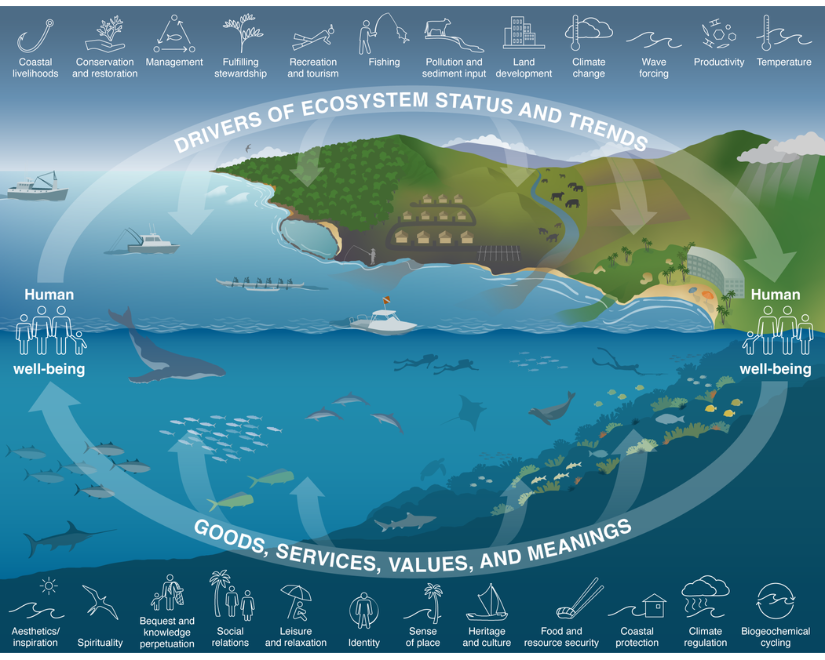
Small Boat Commercial Fishers
Small-boat commercial fishers play a vital role in supporting local food systems, nutrition, food security, and community social cohesion in Hawaiʻi. The small boat commercial fishing fleet is composed of comparatively smaller vessels (16–33 feet) than the larger, longline-based commercial fleet. Fishers employ a broad range of gear types to catch a variety of fish species. Fishers often sell catch for commercial purposes but also retain it for home consumption, share it with family and friends, or give it away for locally important occasions and events.
Indicators for pelagic, bottomfish, and nearshore fisheries shed light on changes within Hawaiʻi small boat commercial fisheries. Comparing historical (1990–2014 ) with more recent (2015–2019) time periods shows that reported catch has changed geographically over time. Reported catch decreased for the majority of areas within the main Hawaiian Islands, but some areas have seen large increases in catch. Trends in reported catch per trip have been relatively stable or increased over time for a number of species. Declines in reported catch coincide with a decline in the total number of fishers reporting commercial catch. This decreased by as much as 31 percent for some fisheries between the two time periods. The declines in active fishers presumably contributed to the declines in total catch and other similar trends in small boat commercial fisheries indicators.
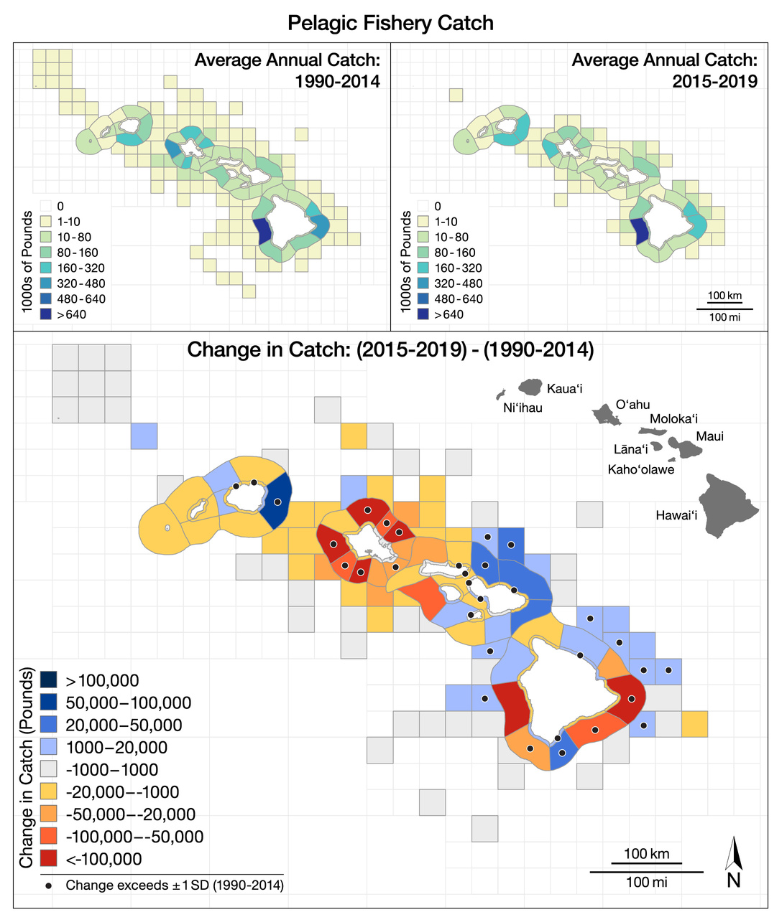
Climate Change and Ecosystem Vulnerability
Climate change poses a critical threat to ocean ecosystems in Hawaiʻi, particularly tropical shallow-water coral reefs that encircle each of the islands. Stronger and more frequent marine heatwaves are causing widespread coral bleaching and mortality. The strongest marine heatwave on record blanketed Hawaiʻi in 2015 and caused upwards of 50 percent coral loss in the most affected reefs.
Assuming continued and increased fossil fuel use, ocean warming is projected to cause severe bleaching in the coming decades, like what was experienced in 2015. By 2048, severe coral bleaching is expected to occur on an annual basis across Hawaiʻi. However, because the ocean is not warming at the same rate across Hawaiʻi, annual severe bleaching is projected to occur as early as 2030 in some areas and as late as 2066 in others.
Coral reefs' vulnerability to climate change depends not only on the frequency and severity of climate-driven disturbances, such as marine heatwaves, but also on ecosystem sensitivity. Sensitivity is the combination of coral reef resilience and the extent to which that resilience is compromised by human impacts. Coral reef vulnerability to climate change was assessed at more than 400 sites across the Hawaiian Islands. All islands except Oʻahu and Niʻihau had sites with low vulnerability to climate change; Lānaʻi, Molokaʻi, and Kaho‘olawe had the greatest proportion of low vulnerability sites. Islands with the highest proportion of high vulnerability sites were Hawai‘i Island, O‘ahu, and Kauaʻi. Conservation and management actions that account for climate vulnerability give reefs the best chance to continue to function and provide ecosystem and cultural services.
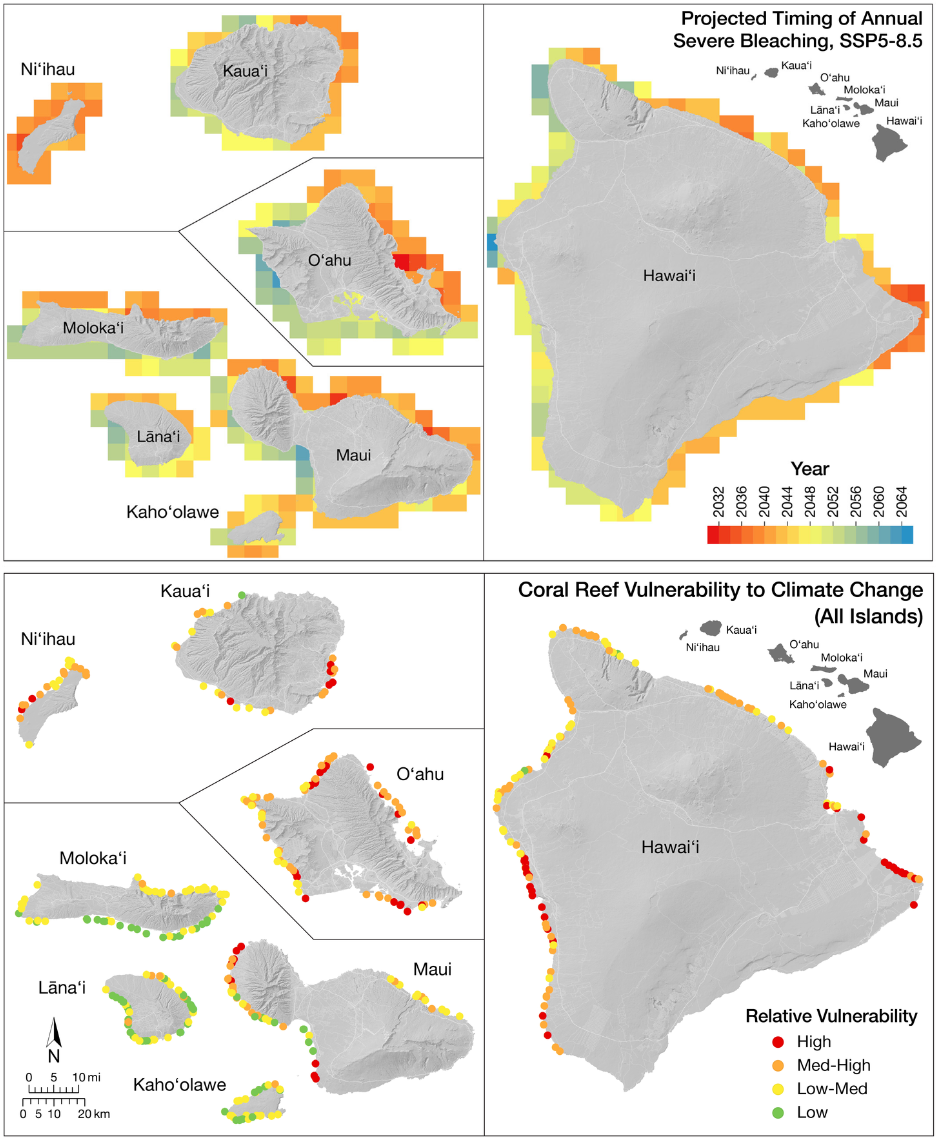
Cumulative Impacts
The high coastal population combined with a tourism industry that attracted over 10 million visitors in 2019 means that the great majority of human activities, visitor accommodations, and infrastructure occur near the coast in Hawaiʻi. Along the shore, land-based impacts like wastewater pollution and sediment input combine with sea-based impacts, such as fishing pressure. These are cumulative impacts that disrupt natural ecological processes and reduce ecosystem health, function, and resilience.
Strong Connections
The key theme of the 2022 Ecosystem Status Report for Hawaiʻi is strong connections: the human-land-sea connections between people and place, climate change and ecological communities, human activities and ecosystem health, and many more. This theme is also relevant for applying and building upon the findings in this report. Strong connections, especially collaborations and partnerships among government, academic, non-governmental organizations and communities, are necessary for setting and achieving effective management and conservation goals. Only through such strong connections can we ensure the ocean environment in Hawai‘i continues to support human well-being in our changing climate.
